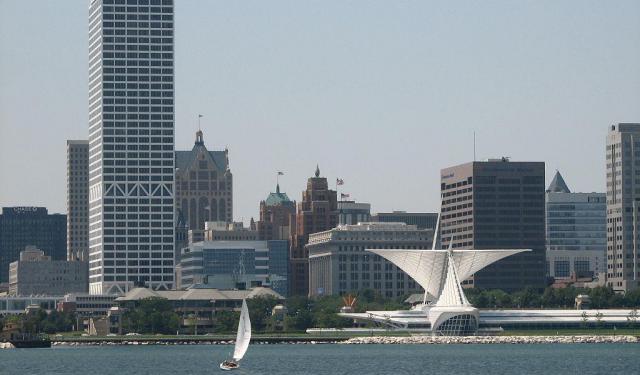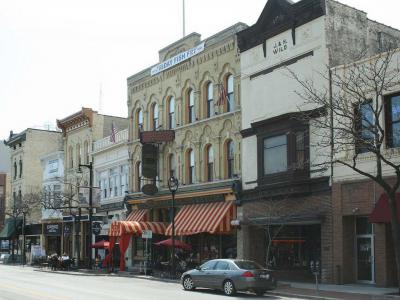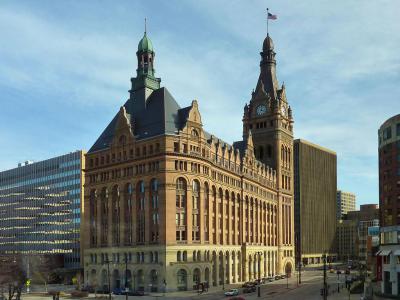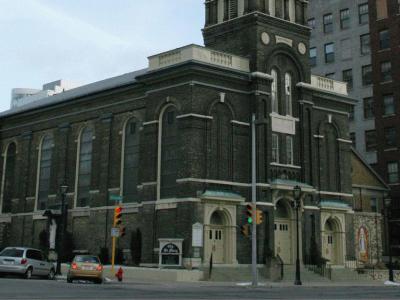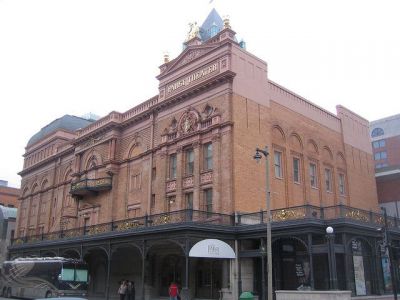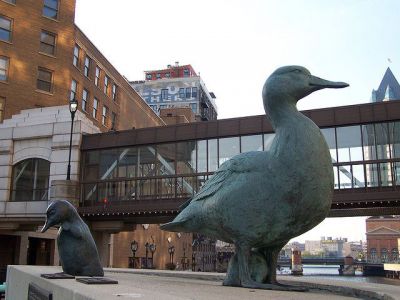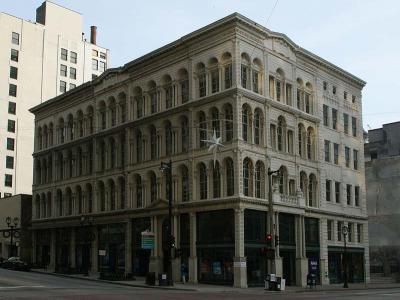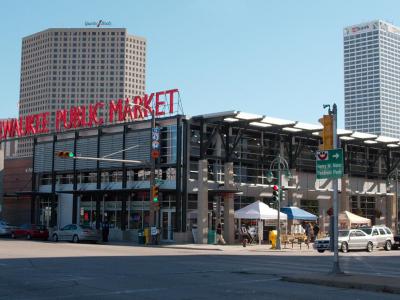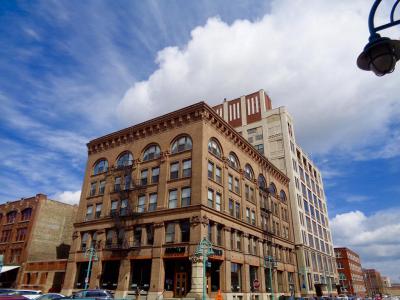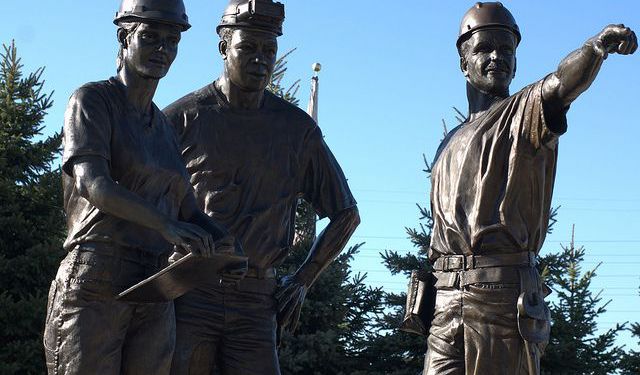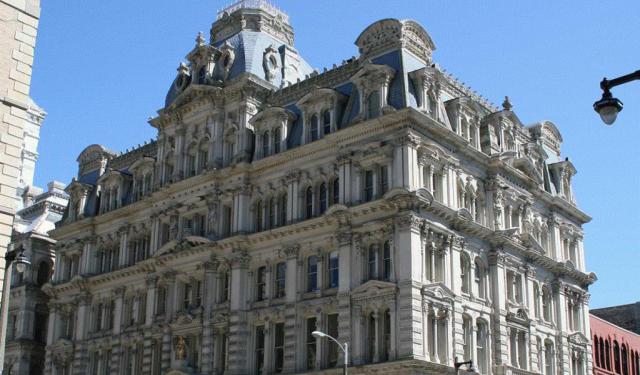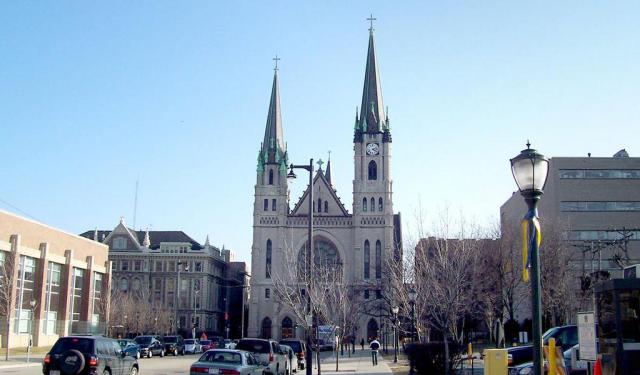Milwaukee Introduction Walking Tour (Self Guided), Milwaukee
Mark Twain is said to have once humorously remarked on Milwaukee's pronunciation, saying: "Milwaukee is a beauty; I presume it is the largest in the world. They spell it Milwaukie and pronounce it Mlwaukay. Thus they have a rhyme in the middle of a word."
The city's name is derived from an Algonquian word "Millioke," which roughly translates to "Good or Beautiful Land" or "Gathering Place by the Water." This is quite fitting, as Milwaukee is indeed nestled along the western shore of Lake Michigan.
The region's original inhabitants were the Native American tribes, such as the Menominee, Fox, Sauk, Potawatomi, Ojibwe, and Mascouten. As for the European settlers, their presence in the area predates the 1833 Treaty of Chicago, with French missionaries arriving in the 17th century. Founding fathers like Solomon Juneau, Byron Kilbourn, and George H Walker shaped the city, leading to its incorporation as the City of Milwaukee in 1846.
The city grew in size throughout the mid-19th century, shaped by the waves of German immigrants. Polish immigrants also settled here in large numbers, particularly on the South Side, contributing to Milwaukee's diverse cultural landscape. The city's South Side is synonymous with its Polish heritage. Over time, additional European groups (like Italians, Irish, and Serbians), as well as African-Americans, Puerto Ricans, and Mexicans, made their homes in Milwaukee, adding to its rich cultural fabric.
As a port city, Milwaukee emerged as a center for trade and manufacturing. As one of the largest wheat-producing regions in the world, it soon became known for flour mills and breweries. In addition, the city was prominent in tanneries. Cream-colored bricks were also largely produced here, which gave the city its nickname "The Cream City."
Visitors to Milwaukee enjoy touring its many historic landmarks. Among them are the Iron Block Building, the Milwaukee City Hall, and the statue of Gertie the Duck. Most of these are found in the neighborhoods east and west of the Milwaukee River.
Whether you're wandering through the cobblestone streets of the Historic Third Ward or marveling at the delights of Milwaukee Public Market, there's much to see and do in this city for everyone. Immersing yourself in Milwaukee's vibrant past and present is a journey worth taking! There's an adventure waiting for you! So, take this self-guided walk and make memories in this "Good Land" by the water now!
The city's name is derived from an Algonquian word "Millioke," which roughly translates to "Good or Beautiful Land" or "Gathering Place by the Water." This is quite fitting, as Milwaukee is indeed nestled along the western shore of Lake Michigan.
The region's original inhabitants were the Native American tribes, such as the Menominee, Fox, Sauk, Potawatomi, Ojibwe, and Mascouten. As for the European settlers, their presence in the area predates the 1833 Treaty of Chicago, with French missionaries arriving in the 17th century. Founding fathers like Solomon Juneau, Byron Kilbourn, and George H Walker shaped the city, leading to its incorporation as the City of Milwaukee in 1846.
The city grew in size throughout the mid-19th century, shaped by the waves of German immigrants. Polish immigrants also settled here in large numbers, particularly on the South Side, contributing to Milwaukee's diverse cultural landscape. The city's South Side is synonymous with its Polish heritage. Over time, additional European groups (like Italians, Irish, and Serbians), as well as African-Americans, Puerto Ricans, and Mexicans, made their homes in Milwaukee, adding to its rich cultural fabric.
As a port city, Milwaukee emerged as a center for trade and manufacturing. As one of the largest wheat-producing regions in the world, it soon became known for flour mills and breweries. In addition, the city was prominent in tanneries. Cream-colored bricks were also largely produced here, which gave the city its nickname "The Cream City."
Visitors to Milwaukee enjoy touring its many historic landmarks. Among them are the Iron Block Building, the Milwaukee City Hall, and the statue of Gertie the Duck. Most of these are found in the neighborhoods east and west of the Milwaukee River.
Whether you're wandering through the cobblestone streets of the Historic Third Ward or marveling at the delights of Milwaukee Public Market, there's much to see and do in this city for everyone. Immersing yourself in Milwaukee's vibrant past and present is a journey worth taking! There's an adventure waiting for you! So, take this self-guided walk and make memories in this "Good Land" by the water now!
How it works: Download the app "GPSmyCity: Walks in 1K+ Cities" from Apple App Store or Google Play Store to your mobile phone or tablet. The app turns your mobile device into a personal tour guide and its built-in GPS navigation functions guide you from one tour stop to next. The app works offline, so no data plan is needed when traveling abroad.
Milwaukee Introduction Walking Tour Map
Guide Name: Milwaukee Introduction Walking Tour
Guide Location: USA » Milwaukee (See other walking tours in Milwaukee)
Guide Type: Self-guided Walking Tour (Sightseeing)
# of Attractions: 8
Tour Duration: 1 Hour(s)
Travel Distance: 2.1 Km or 1.3 Miles
Author: StaceyP
Sight(s) Featured in This Guide:
Guide Location: USA » Milwaukee (See other walking tours in Milwaukee)
Guide Type: Self-guided Walking Tour (Sightseeing)
# of Attractions: 8
Tour Duration: 1 Hour(s)
Travel Distance: 2.1 Km or 1.3 Miles
Author: StaceyP
Sight(s) Featured in This Guide:
- Old World Third Street
- Milwaukee City Hall
- Old Saint Mary Church
- Pabst Theatre
- Gertie the Duck Sculpture
- Iron Block Building
- Milwaukee Public Market
- Historic Third Ward
1) Old World Third Street (must see)
The area that would eventually be known as Milwaukee saw its first permanent European settlers in 1822. A trading post was built by Solomon Juneau, a French Canadian fur trader and founding father of Milwaukee. His log cabins eventually gave way to brick houses. By the 1850s, a series of buildings had been erected that exist to this day.
Old World Third Street consists of a number of shops, restaurants, night clubs and bars. It is a busy place for locals to gather and an exciting spot to start or end a walking tour of the city. Guests to Milwaukee can enjoy the architecture of the Victorian, Gothic Revival and Italiante style buildings while dining on German specialties, shopping at a boutique or simply appreciating the art that populates the area.
Ten of the buildings at Old World Third Street have their roots in the early days of the city. These include the Bauer Building, the Pritzlaff Hardware Company, the Otto Thiele Drug Store, the John Hinkel saloon, the John Lipps building, the Adolph Schoenleber building, the Joseph Schlitz Brewing Company Saloon, the Steinmeyer building, the Usinger Sausage Factory and Mader's Restaurant.
Tourists to Old World Third Street have easy access to many interesting places to see and things to do. The area is close to the Milwaukee Riverwalk District, Pere Marquette Park and the Miller High Life theatre. With its location adjacent to the Milwaukee River, Old World Third Street is the perfect spot for people watching and enjoying the sights and sounds of nature.
Why You Should Visit:
- To see architecture from the early days of Milwaukee
- To enjoy the sights and sounds of both people and nature
Tips:
Enjoy Old World Third Street any time of the day or night. Many tourists visit during the day to look at the art and architecture, and then return in the evening for dinner and dancing.
Old World Third Street consists of a number of shops, restaurants, night clubs and bars. It is a busy place for locals to gather and an exciting spot to start or end a walking tour of the city. Guests to Milwaukee can enjoy the architecture of the Victorian, Gothic Revival and Italiante style buildings while dining on German specialties, shopping at a boutique or simply appreciating the art that populates the area.
Ten of the buildings at Old World Third Street have their roots in the early days of the city. These include the Bauer Building, the Pritzlaff Hardware Company, the Otto Thiele Drug Store, the John Hinkel saloon, the John Lipps building, the Adolph Schoenleber building, the Joseph Schlitz Brewing Company Saloon, the Steinmeyer building, the Usinger Sausage Factory and Mader's Restaurant.
Tourists to Old World Third Street have easy access to many interesting places to see and things to do. The area is close to the Milwaukee Riverwalk District, Pere Marquette Park and the Miller High Life theatre. With its location adjacent to the Milwaukee River, Old World Third Street is the perfect spot for people watching and enjoying the sights and sounds of nature.
Why You Should Visit:
- To see architecture from the early days of Milwaukee
- To enjoy the sights and sounds of both people and nature
Tips:
Enjoy Old World Third Street any time of the day or night. Many tourists visit during the day to look at the art and architecture, and then return in the evening for dinner and dancing.
2) Milwaukee City Hall (must see)
The iconic Milwaukee City Hall is one of the most recongizable landmarks of the city. It has been used in pop culture to signify Milwaukee. It is also prominent in outlines of the city.
The Milwaukee City Hall was built in 1895. The architect, Henry C. Koch, designed numerous buildings in Wisconsin and around the Midwestern United States. The Flemish Renaissance Revival style used in the City Hall has since been reflected in the nearby buildings to create a cohesive style and to reflect the wide German ancestry of the region.
The building was the tallest structure in Milwaukee through 1973 when the First Wisconsin Center was built. That was also the year that it was added to the National Register of Historic Places.
Visitors can tour the bell tower of the Milwaukee City Hall, which was reassembled from 2006 to 2008. However, tours are not offered on a regular basis and may not be available during the time that the visit occurs. Most tourists who visit the area are delighted to observe the beauty of the structure from street level.
Milwaukee City Hall is located near the Milwaukee River, which is a beautiful and pleasant part of any walking tour of the city. Other nearby landmarks and interesting sites include Cathedral Square Park, Red Arrow Park and Marcus Performing Arts Center. Tourists will also enjoy visiting the Milwaukee Riverwalk District either before or after stopping by the Milwaukee City Hall.
Why You Should Visit:
The city hall is one of the most important and recognizable buildings in Milwaukee and a city landmark.
Tips:
The bell tower has a large number of steep steps so tourists should be prepared for an arduous trek.
The Milwaukee City Hall was built in 1895. The architect, Henry C. Koch, designed numerous buildings in Wisconsin and around the Midwestern United States. The Flemish Renaissance Revival style used in the City Hall has since been reflected in the nearby buildings to create a cohesive style and to reflect the wide German ancestry of the region.
The building was the tallest structure in Milwaukee through 1973 when the First Wisconsin Center was built. That was also the year that it was added to the National Register of Historic Places.
Visitors can tour the bell tower of the Milwaukee City Hall, which was reassembled from 2006 to 2008. However, tours are not offered on a regular basis and may not be available during the time that the visit occurs. Most tourists who visit the area are delighted to observe the beauty of the structure from street level.
Milwaukee City Hall is located near the Milwaukee River, which is a beautiful and pleasant part of any walking tour of the city. Other nearby landmarks and interesting sites include Cathedral Square Park, Red Arrow Park and Marcus Performing Arts Center. Tourists will also enjoy visiting the Milwaukee Riverwalk District either before or after stopping by the Milwaukee City Hall.
Why You Should Visit:
The city hall is one of the most important and recognizable buildings in Milwaukee and a city landmark.
Tips:
The bell tower has a large number of steep steps so tourists should be prepared for an arduous trek.
3) Old Saint Mary Church
Old Saint Mary's Church is the oldest church building in Milwaukee. The original structure was built in 1847 from a design by Prussian architect Victor Schulte. It was designed in the Zopfstil style, a traditional German architecture. The interior was redecorated after a fire in 1893, but the exterior still stands very much as it did right after the 1867 remodeling, two years after the Civil War. A painting of the Annunciation behind the altar by Franz Xavier Glink was donated by King Ludwig I of Bavaria.
The church's tower gained a clock in 1860 and three bells in 1868. These bronze bells were cast in Munich. Saint Mary's was modified fairly extensively from 1866 to 1867, again under direction of Victor Schulte. The east end was extended and the west facade was reworked, with a new spire added in 1866.
This church has since become the basis for a number of other church buildings in the city due to its clean lines and reflection of the community. Those on walking tours may also stop by the Cathedral of Saint John the Evangelist and Cathedral Square Park. Both of these spots are within two easily walkable blocks of the Old Saint Mary's church. The church is also near Milwaukee City Hall. It is only three blocks east of the Milwaukee River.
The Old Saint Mary Church continues to hold services on Sundays as well as daily mass Monday through Friday. The church is also open for confession on Mondays, Tuesdays and Fridays. Visitors are welcome to attend church service or explore the church grounds.
The church's tower gained a clock in 1860 and three bells in 1868. These bronze bells were cast in Munich. Saint Mary's was modified fairly extensively from 1866 to 1867, again under direction of Victor Schulte. The east end was extended and the west facade was reworked, with a new spire added in 1866.
This church has since become the basis for a number of other church buildings in the city due to its clean lines and reflection of the community. Those on walking tours may also stop by the Cathedral of Saint John the Evangelist and Cathedral Square Park. Both of these spots are within two easily walkable blocks of the Old Saint Mary's church. The church is also near Milwaukee City Hall. It is only three blocks east of the Milwaukee River.
The Old Saint Mary Church continues to hold services on Sundays as well as daily mass Monday through Friday. The church is also open for confession on Mondays, Tuesdays and Fridays. Visitors are welcome to attend church service or explore the church grounds.
4) Pabst Theatre
Pabst Theatre was constructed in 1895 to bring theatre to the city of Milwaukee. After more than 100 years in operation, the Pabst is one of the oldest theatres in the country that has seen continuous use since its first performance.
The Pabst was built at the request of Frederick Pabst. He had previously owned the Nunnemacher Grand Opera House, which was destroyed in a fire. The Pabst was built on the same site as the Nunnemacher in a German Renaissance Revival style designed by Otto Strack. Some of the updates that Strack made in his design were the inclusion of all-electric lights, an electric organ, an air conditioner and fire curtains. All of these items were both rare and revolutionary at the time.
The Pabst was named a National Historic Landmark in 1991. It was also named as a landmark of Milwaukee and the state of Wisconsin.
Visitors can enjoy the style of the Pabst from the outside or they can plan to attend a show. Guests can enjoy concerts, plays, ballet performances and other special events.
The Pabst was built at the request of Frederick Pabst. He had previously owned the Nunnemacher Grand Opera House, which was destroyed in a fire. The Pabst was built on the same site as the Nunnemacher in a German Renaissance Revival style designed by Otto Strack. Some of the updates that Strack made in his design were the inclusion of all-electric lights, an electric organ, an air conditioner and fire curtains. All of these items were both rare and revolutionary at the time.
The Pabst was named a National Historic Landmark in 1991. It was also named as a landmark of Milwaukee and the state of Wisconsin.
Visitors can enjoy the style of the Pabst from the outside or they can plan to attend a show. Guests can enjoy concerts, plays, ballet performances and other special events.
5) Gertie the Duck Sculpture
Perched on the northwest side of Milwaukee’s Wisconsin Avenue bridge, Gertie the Duck is more than just a 4-foot-tall bronze sculpture-she’s a local legend cast in metal. Created by artist Gwendolyn Gillen and installed in 1997 as part of the city’s RiverSculpture public art series, Gertie commemorates a true wartime icon who captured hearts during the final months of World War II.
In April 1945, a mallard hen was spotted nesting atop a wooden piling beneath the bridge. Milwaukee Journal outdoor writer Gordon MacQuarrie began reporting on her steadfast effort to hatch her nine eggs-undeterred by curious crowds, honking cars, and spring storms. Her determination quickly earned her a name: Gertie. For 37 days, readers followed Gertie’s saga in a daily newspaper serial, and the story soon spread beyond Wisconsin via national and international news outlets.
By the time six ducklings hatched, Gertie had become a symbol of quiet resilience. The Boy Scouts formed a Gertie Patrol. Mother's Day cards poured in. The Wisconsin Humane Society posted a round-the-clock guard. Even Life Magazine and London’s Daily Express covered her journey. Ultimately, five ducklings and Gertie survived, and the family was briefly displayed at Gimbels department store, drawing over two million visitors before being relocated to Juneau Park lagoon.
Gertie’s tale lived on in books, toys, and television. A children’s book by Nicholas Georgiady and Louis Romano sold over 800,000 copies and was translated into six languages. She even starred in a 1963 GE True episode titled “Gertie the Great.”
Today, Gertie still keeps watch over the Milwaukee River-not just as a charming sculpture but as a feathered reminder of a moment when a little duck brought comfort, hope, and a sense of wonder to a weary world.
In April 1945, a mallard hen was spotted nesting atop a wooden piling beneath the bridge. Milwaukee Journal outdoor writer Gordon MacQuarrie began reporting on her steadfast effort to hatch her nine eggs-undeterred by curious crowds, honking cars, and spring storms. Her determination quickly earned her a name: Gertie. For 37 days, readers followed Gertie’s saga in a daily newspaper serial, and the story soon spread beyond Wisconsin via national and international news outlets.
By the time six ducklings hatched, Gertie had become a symbol of quiet resilience. The Boy Scouts formed a Gertie Patrol. Mother's Day cards poured in. The Wisconsin Humane Society posted a round-the-clock guard. Even Life Magazine and London’s Daily Express covered her journey. Ultimately, five ducklings and Gertie survived, and the family was briefly displayed at Gimbels department store, drawing over two million visitors before being relocated to Juneau Park lagoon.
Gertie’s tale lived on in books, toys, and television. A children’s book by Nicholas Georgiady and Louis Romano sold over 800,000 copies and was translated into six languages. She even starred in a 1963 GE True episode titled “Gertie the Great.”
Today, Gertie still keeps watch over the Milwaukee River-not just as a charming sculpture but as a feathered reminder of a moment when a little duck brought comfort, hope, and a sense of wonder to a weary world.
6) Iron Block Building
The Iron Block Building is a unique, cast iron building located close to the banks of the Milwaukee River at Water Street and Wisconsin Avenue. The building was completed in 1860 using a design by architect George H. Johnson.
The panels of the iron building were cast in New York and shipped to Milwaukee to create a four story structure that would be fire resistant and long-lasting. It was constructed in Italianate style, unlike many of the German-influences found in most of the city's architecture at the time.
The Iron Block Building was originally constructed as a commercial property with the plan to fill the structure with businesses of all types. The top floor of the building was occupied by the Excelsior Lodge of Masons, which is why its first name was the Excelsior Block.
The building fell into disrepair and was deemed to be a public safety threat as portions of the facade had a habit of falling into the street. In 2012, the building was purchased by the Dental Associates who embarked on the task of restoring the Iron Block Building to the structure visitors can see today. It is now a completely renovated building and the home of Dental Associates Family and Specialty Care.
The panels of the iron building were cast in New York and shipped to Milwaukee to create a four story structure that would be fire resistant and long-lasting. It was constructed in Italianate style, unlike many of the German-influences found in most of the city's architecture at the time.
The Iron Block Building was originally constructed as a commercial property with the plan to fill the structure with businesses of all types. The top floor of the building was occupied by the Excelsior Lodge of Masons, which is why its first name was the Excelsior Block.
The building fell into disrepair and was deemed to be a public safety threat as portions of the facade had a habit of falling into the street. In 2012, the building was purchased by the Dental Associates who embarked on the task of restoring the Iron Block Building to the structure visitors can see today. It is now a completely renovated building and the home of Dental Associates Family and Specialty Care.
7) Milwaukee Public Market (must see)
The Historic Third Ward is a must visit spot for visitors to Milwaukee. Within the Historic Third Ward is the Milwaukee Public Market. It is a great space for locals and visitors alike to both shop and people watch.
The market offers a wide variety of foods, including meats, cheeses, wines, coffees and spices. Other items, like flowers and boutique-style clothing are also available by some vendors.
The Milwaukee Public Market is a newer building in the city, but worthy of a visit even for those who aren't intending to buy souvenirs. Built in 2005 and designed by the Kubala Washatko Architects, the building is made from raw materials that were instrumental to the early success of Milwaukee's industry.
Along with shopping, the Milwaukee Public Market offers classes that can be scheduled in advance. Visitors can check the market's website to learn what classes are available when they are in town. Cooking classes are very popular at the market. They include demonstrations, tastings and recipes that attendees can then take home. The market also often offers special events thanks to the size of the space.
The neighborhood is a favorite among visitors to Milwaukee. While exploring the Historic Third Ward, tourists will see more places to shop and dine. They can also look for one of the many art galleries and entertainment venues. Performing arts like the Milwaukee Ballet and the Skylight Music Theatre are also near. Visitors can find their way to one of the nearby parks as well. Lakeshore State Park is a favorite and convenient place to unwind.
The market's operating hours are Monday through Friday, 10 am to 8 pm; Saturday, 8 am to 8 pm; and Sunday, 9 am to 6 pm.
Why You Should Visit:
- To find great souvenirs to take back home
- To enjoy a taste of Milwaukee
The market offers a wide variety of foods, including meats, cheeses, wines, coffees and spices. Other items, like flowers and boutique-style clothing are also available by some vendors.
The Milwaukee Public Market is a newer building in the city, but worthy of a visit even for those who aren't intending to buy souvenirs. Built in 2005 and designed by the Kubala Washatko Architects, the building is made from raw materials that were instrumental to the early success of Milwaukee's industry.
Along with shopping, the Milwaukee Public Market offers classes that can be scheduled in advance. Visitors can check the market's website to learn what classes are available when they are in town. Cooking classes are very popular at the market. They include demonstrations, tastings and recipes that attendees can then take home. The market also often offers special events thanks to the size of the space.
The neighborhood is a favorite among visitors to Milwaukee. While exploring the Historic Third Ward, tourists will see more places to shop and dine. They can also look for one of the many art galleries and entertainment venues. Performing arts like the Milwaukee Ballet and the Skylight Music Theatre are also near. Visitors can find their way to one of the nearby parks as well. Lakeshore State Park is a favorite and convenient place to unwind.
The market's operating hours are Monday through Friday, 10 am to 8 pm; Saturday, 8 am to 8 pm; and Sunday, 9 am to 6 pm.
Why You Should Visit:
- To find great souvenirs to take back home
- To enjoy a taste of Milwaukee
8) Historic Third Ward (must see)
Milwaukee's Historic Third Ward is a neighborhood that must be visited on any trip to the city. The Historic Third Ward is filled with multiple galleries, performing arts venues, shopping centers and dining options. Any tourist to Milwaukee could easily spend every day in the Historic Third Ward and never grow bored.
The Historic Third Ward is on the National Register of Historic Places as it is considered the oldest commercial and industrial district in the city. It first came into prominence in 1852 when the railroad entered the city. Over time, the Historic Third Ward experienced a series of tragedies, including the sinking of a ship that is thought to have killed more than 400 people and a fire that ravaged the land and left more than 1,800 people displaced.
Through all of that, the Historic Third Ward prevailed. Today, more than 500 businesses call the Historic Third Ward their home. Visitors can art and culture of practically any style they desire. They will see art galleries, photography studios, potters guilds and more.
Performing arts and entertainment venues in the Historic Third Ward include the Fred Astaire Dance Studio of Milwaukee, the Milwaukee Ballet, the Milwaukee Chamber Theatre and the Trinity Academy of Irish Dance. Museums in the Historic Third Ward include the Milwaukee Institute of Art and Design Galleries among many others.
The Historic Third Ward makes up a large area of Milwaukee that stretches from the confluence of the Milwaukee and Menomonee Rivers all the way to Milwaukee Bay.
Why You Should Visit:
To experience the greatest of art and culture in Milwaukee
Tips:
Don't try to see all of the Historic Third Ward in one day. Spread out visits to the Historic Third Ward over the course of a trip to Milwaukee.
The Historic Third Ward is on the National Register of Historic Places as it is considered the oldest commercial and industrial district in the city. It first came into prominence in 1852 when the railroad entered the city. Over time, the Historic Third Ward experienced a series of tragedies, including the sinking of a ship that is thought to have killed more than 400 people and a fire that ravaged the land and left more than 1,800 people displaced.
Through all of that, the Historic Third Ward prevailed. Today, more than 500 businesses call the Historic Third Ward their home. Visitors can art and culture of practically any style they desire. They will see art galleries, photography studios, potters guilds and more.
Performing arts and entertainment venues in the Historic Third Ward include the Fred Astaire Dance Studio of Milwaukee, the Milwaukee Ballet, the Milwaukee Chamber Theatre and the Trinity Academy of Irish Dance. Museums in the Historic Third Ward include the Milwaukee Institute of Art and Design Galleries among many others.
The Historic Third Ward makes up a large area of Milwaukee that stretches from the confluence of the Milwaukee and Menomonee Rivers all the way to Milwaukee Bay.
Why You Should Visit:
To experience the greatest of art and culture in Milwaukee
Tips:
Don't try to see all of the Historic Third Ward in one day. Spread out visits to the Historic Third Ward over the course of a trip to Milwaukee.
Walking Tours in Milwaukee, Wisconsin
Create Your Own Walk in Milwaukee
Creating your own self-guided walk in Milwaukee is easy and fun. Choose the city attractions that you want to see and a walk route map will be created just for you. You can even set your hotel as the start point of the walk.
Monuments and Statues Walking Tour
Once in Milwaukee, you may be surprised by the diverse array of monuments and statues dotting the city. Indeed, Milwaukee is home to a multitude of sculptures of different purposes, from those honoring historic figures to entertaining ones to the memorials commemorating war and its heroes.
The Leif Eriksson Statue, a striking representation of the Norse explorer, stands as a symbol of... view more
Tour Duration: 2 Hour(s)
Travel Distance: 3.4 Km or 2.1 Miles
The Leif Eriksson Statue, a striking representation of the Norse explorer, stands as a symbol of... view more
Tour Duration: 2 Hour(s)
Travel Distance: 3.4 Km or 2.1 Miles
Historical Buildings Tour
Milwaukee's cityscape is richly adorned with an array of historical architecture, showcasing various styles and periods that have shaped its identity. These buildings represent remarkable achievements of craftsmanship and design, reflecting the skills of their creators and the eras in which they emerged. Here, the grandeur of Richardsonian Romanesque, the opulence of Beaux-Arts, and the... view more
Tour Duration: 1 Hour(s)
Travel Distance: 1.1 Km or 0.7 Miles
Tour Duration: 1 Hour(s)
Travel Distance: 1.1 Km or 0.7 Miles
Historical Churches Walking Tour
A comprehensive exploration of the spiritual side of Milwaukee's historical landscape will open your eyes to the number of beautiful historic temples, many of which are listed on the National Register of Historic Places. The city's religious makeup is diverse, from Catholic to Jesuit, and there is a multitude of architectural marvels – churches and cathedrals – matching this variety.... view more
Tour Duration: 2 Hour(s)
Travel Distance: 4.1 Km or 2.5 Miles
Tour Duration: 2 Hour(s)
Travel Distance: 4.1 Km or 2.5 Miles
The Most Popular Cities
/ view all
